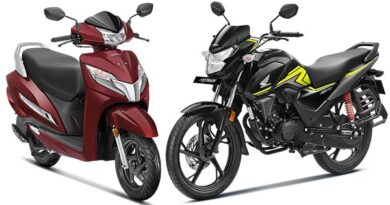Solar Energy Suppliers: A Closer Look at the Cutting-Edge Technologies Driving the Solar Boom
In recent years, solar energy has witnessed a remarkable rise in popularity as the world embraces the urgent need for clean and renewable energy sources. Behind this solar boom are the innovative and cutting-edge technologies developed by solar energy suppliers. These advancements have revolutionized the industry, making solar energy more accessible, efficient, and cost-effective. This article will explore the fascinating world of solar energy technologies, exploring the latest breakthroughs driving the solar boom.
The Rise of Solar Energy Suppliers
Solar energy is derived from the radiant light and heat emitted by the sun. It is converted into electricity through photovoltaic cells, which capture sunlight and transform it into usable energy.
The advantages of solar energy are manifold—it is renewable, abundant, and emits no greenhouse gasses. By harnessing the sun’s power, we can reduce our dependence on fossil fuels and mitigate the adverse effects of climate change.
Solar energy suppliers play a pivotal role in the solar energy market, meeting the increasing demand for clean energy solutions. As public awareness and government support for renewable energy grow, solar energy suppliers are at the forefront, driving the adoption of solar technologies. These suppliers are constantly pushing the boundaries of innovation, developing cutting-edge technologies to improve solar energy systems’ efficiency, reliability, and affordability.
Advanced Solar Photovoltaic Technologies
One of the key areas of advancement in solar energy is photovoltaic technology. Solar panels come in different types, including monocrystalline, polycrystalline, and thin film. Each technology offers unique benefits in efficiency, durability, and cost-effectiveness. Furthermore, ongoing research and development result in breakthroughs in solar panel design and materials, such as perovskite solar cells, which promise even higher efficiencies and lower production costs.
Solar Energy Storage Systems
Energy storage is crucial for maximizing the utilization of solar energy. Solar suppliers are focusing on developing advanced battery technologies to store surplus solar energy during periods of low sunlight or high demand. These storage systems provide a reliable and uninterrupted power supply, reducing reliance on the traditional electrical grid. The advancements in battery technology, including increased capacity and longer lifespans, have made solar energy storage more practical and cost-effective.
Smart Grid Integration
Solar energy suppliers are incorporating smart grid technologies to optimize the integration of solar energy into the electrical grid. Smart grids enable efficient monitoring, control, and management of electricity flow, allowing for seamless integration of solar energy systems. By leveraging technologies such as advanced sensors, real-time data analytics, and automated demand response systems, solar energy suppliers are ensuring grid stability and maximizing the use of solar-generated electricity.
Solar Tracking Systems
Solar tracking systems are another cutting-edge technology driving the solar boom. These systems enable solar panels to follow the sun’s movement throughout the day, optimizing energy capture and increasing efficiency. Single-axis and dual-axis tracking systems adjust the angle and orientation of solar panels, maximizing sunlight exposure and energy production. By implementing solar tracking systems, solar energy suppliers are enhancing the performance and output of solar energy systems, making them even more viable and cost-effective.
Concentrated Solar Power (CSP)
CSP is an innovative technology that harnesses the sun’s energy through mirrors or lenses to generate heat, which is then used to produce electricity. CSP systems, such as parabolic troughs and power towers, offer unique advantages, including storing thermal energy for power generation even when the sun is not shining. Although CSP presents challenges, such as cost and scalability, ongoing research and development focus on improving efficiency and reducing costs, making it a promising component of the solar energy landscape.
The relentless pursuit of cutting-edge technologies by reputable solar panel wholesale suppliers in Pakistan, like Livoltek, fuels the solar boom. These innovations have not only made solar energy more accessible and efficient but have also driven down costs, making it an increasingly attractive choice for businesses and individuals alike. As the world continues to embrace clean and renewable energy, the contributions of solar energy suppliers and their cutting-edge technologies pave the way for a greener and more sustainable future.
FAQs
Q1: What is solar photovoltaic technology?
Solar photovoltaic technology is the process of converting sunlight into electricity using photovoltaic cells. These cells, typically made of silicon, capture the energy from sunlight and convert it into usable electrical energy. Solar panels of multiple photovoltaic cells are commonly used to harness solar energy for various applications.
Q2: How do solar energy storage systems work?
Solar energy storage systems store excess energy generated by solar panels during periods of high sunlight or low demand. These systems typically use advanced battery technologies to store the surplus energy for later use. When sunlight is limited, or demand is high, the stored energy is released, providing a consistent power supply. This allows for greater self-consumption of solar energy and reduces reliance on the electrical grid.
Q3: What are the benefits of smart grid integration in solar energy systems?
Smart grid integration enables the seamless integration of solar energy into the electrical grid. By incorporating advanced technologies, such as sensors, real-time data analytics, and automated demand response systems, smart grids optimize energy flow and ensure grid stability. This integration allows for efficient solar energy management, reduces transmission losses, and enhances grid reliability. It also enables bi-directional energy flow, facilitating the exchange of excess solar energy with the grid and promoting energy independence.
Read article more techpostusa




